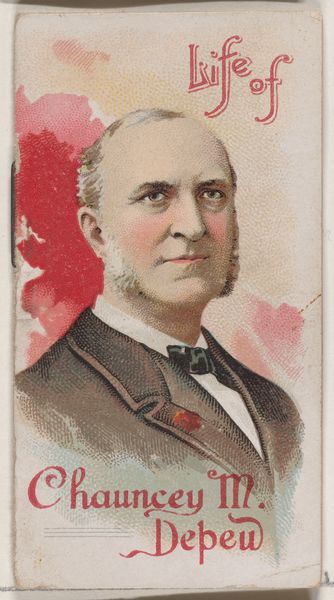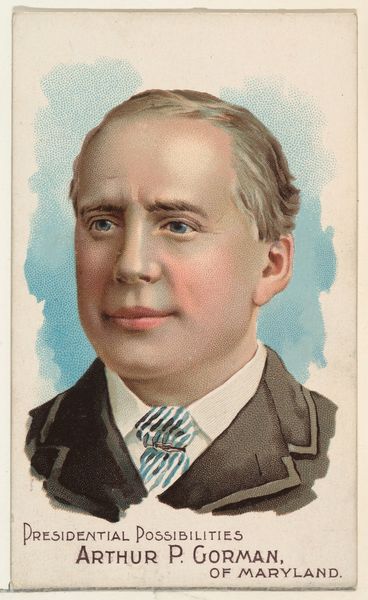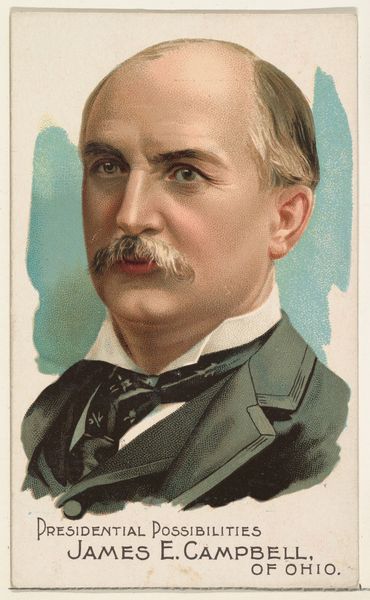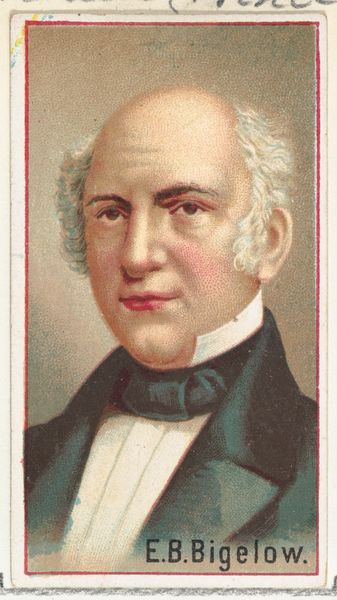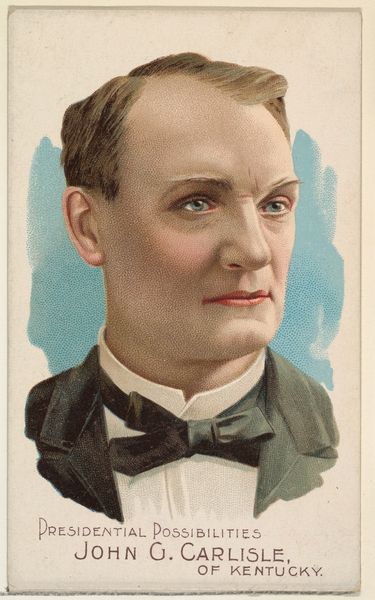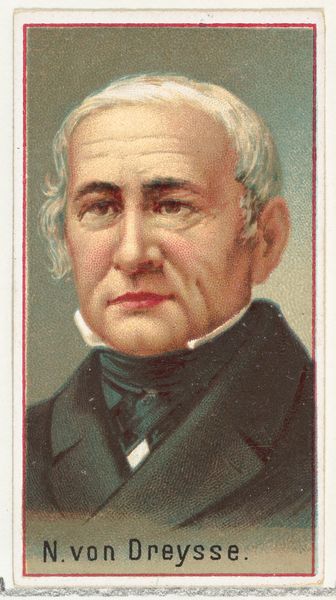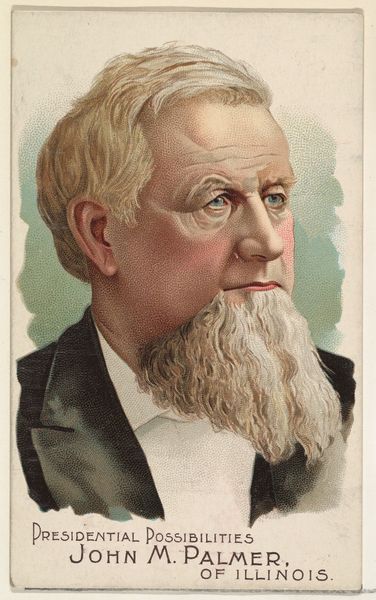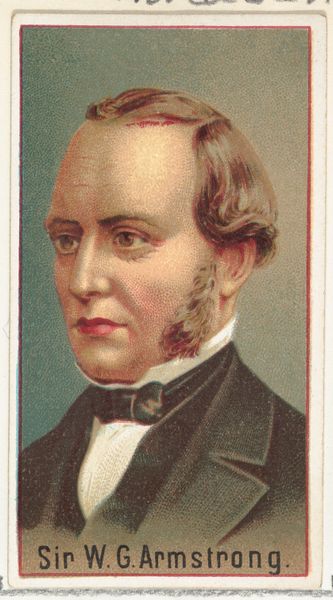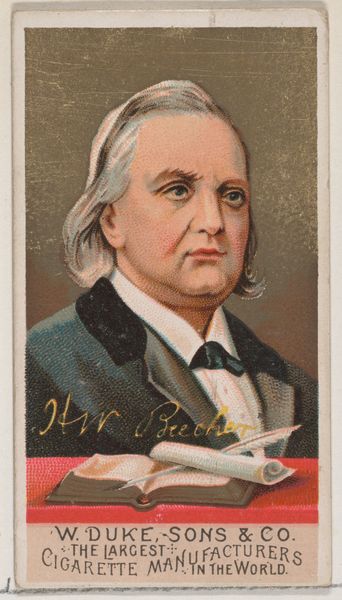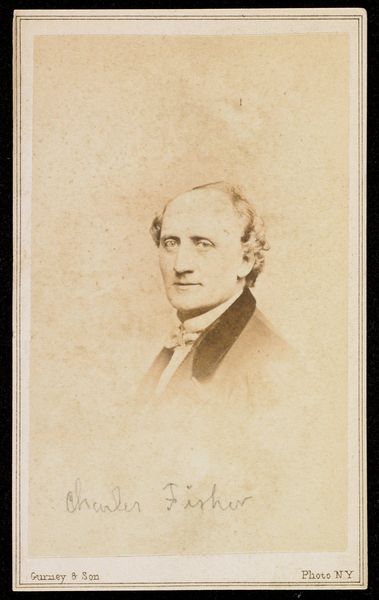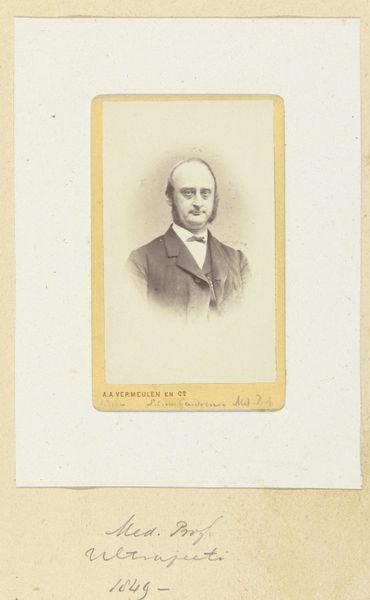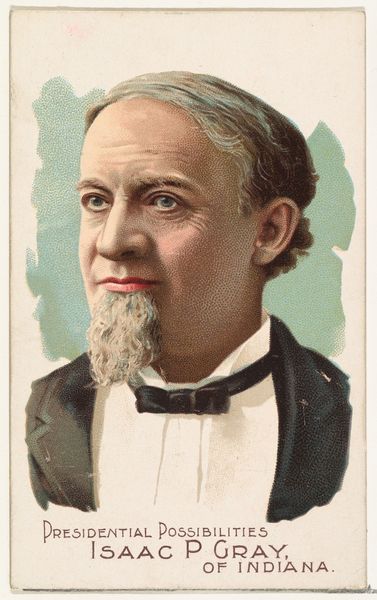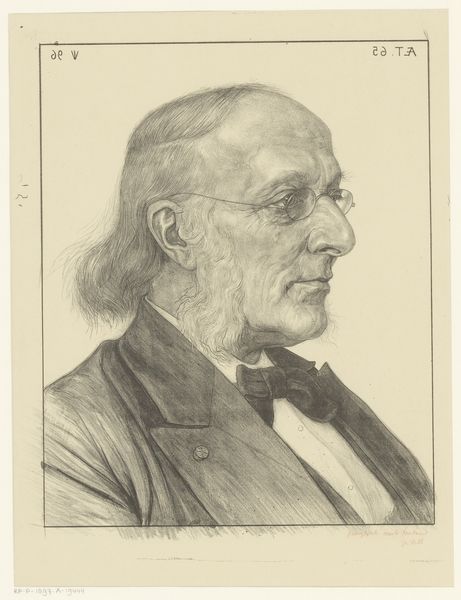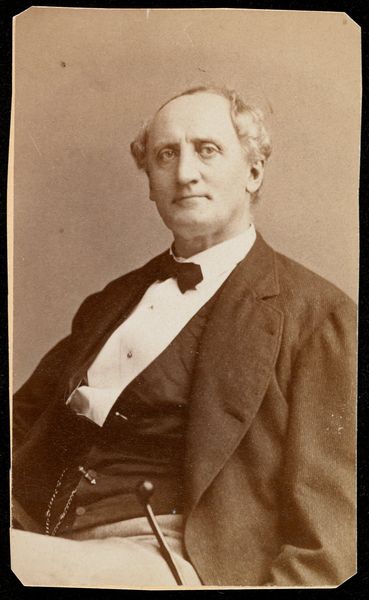
Chauncey M. Depew of New York, from the Presidential Possibilities series (N124) issued by Duke Sons & Co. to promote Honest Long Cut Tobacco 1888
0:00
0:00
drawing, lithograph, print
#
portrait
#
drawing
#
lithograph
# print
#
caricature
#
genre-painting
Dimensions: Sheet: 4 1/8 × 2 1/2 in. (10.4 × 6.4 cm)
Copyright: Public Domain
Curator: What a striking lithograph! This is “Chauncey M. Depew of New York,” from the "Presidential Possibilities" series, dating back to 1888. Editor: It's unsettling. There's something almost mask-like about his face. I see a kind of industrial-age pretense in that suit. What’s most fascinating to me is this was produced by W. Duke, Sons & Co. to promote Honest Long Cut Tobacco. Curator: Absolutely! Depew, a prominent figure in the railroad industry and politics, is presented here as a potential president. The lithographic print itself, like many from this period, uses symbolism associated with power. Think of that stiff collar and neatly tied bow, almost iconic for the era's elite. Editor: Right, and that’s a mass produced card inserted in a package of tobacco. The portrait, originally a form to signify the upper classes, gets transformed into capital to get consumers to buy something. The image loses its association to social standing by its association with product consumption. Curator: Precisely. The commodification is complete. The imagery borrows the semiotics of power – the implication is, buy this tobacco, aspire to this image. Do you see in Depew’s visage the ambitions and tensions of the era? Editor: I find myself focusing on the materials and the process of its production –the labor involved in creating the drawing, etching the stones for the lithograph, and then the large-scale printing and distribution linked directly to this specific tobacco product. How did the production impact the social reach and perceived worth of these images at that time? Curator: That intersection is where its brilliance lies. By placing this on tobacco packaging, it blurs the lines between commerce, politics, and individual identity in a new way. It uses visual cues rooted in the old to propel forward commerce in the new. It created an entirely new class of iconography. Editor: In that light, this object reminds us that the “fine arts” don’t exist in isolation from industry. Its cultural capital directly correlated to and depended on production materials and modes for its life. Curator: Well put! It seems a small tobacco card can reveal grand societal mechanisms. Editor: Exactly! Art history reveals complex commodity chains that drive and are driven by our culture.
Comments
No comments
Be the first to comment and join the conversation on the ultimate creative platform.
